
Courtesy of Primo Magazine. June -July 2009 Issue

The Demolition of Their Beloved Church?
BY TRUBY CHIAVIELLO
All is not lost with Ocean Hill, although it may seem that way at first glance. Long blighted and crime-ridden, this enclave between Brooklyn’s Brownsville and East New York neighborhoods, might finally get a chance at redemption. The springboard for renewal may be Our Lady of Loreto.
The 100-year-old Italian Baroque style church is a massive work of art in the midst of decay.
The tallest structure in the neighborhood was built by Italian immigrants, under the leadership of parish priest Father Vincent Sorrentino. The cross atop a pediment, in-between two towers, rises with a facade hosting carved statues of Saints Peter and Paul. The flawless stone masonry beseeches from onlookers a sense of awe and serenity.
At the edge of the church’s property at the corner of Sackman and Pacific Streets near a World War II memorial under a statue of the Blessed Mother, a small group of neighborhood sons and daughters meet on a cloudy spring day.
Most of them moved away from here decades ago. They have come to review plans, exchange ideas and offer moral support to transform the neighborhood. But they have to save Our Lady of Loreto first

"After it was designated a National Italian Catholic Church,
towns in Italy sent statues of their patron saints here to be venerated.
The cost was paid for by the immigrants."
Barbara Florio
 The church is slated for demolition. The reason given by the Brooklyn Diocese is a lack of parishioners. Sunday Mass generates barely 20 in attendance. The diocese hopes to erect affordable housing in the church’s place under the direction of Catholic Charities with financial assistance from the state.
The church is slated for demolition. The reason given by the Brooklyn Diocese is a lack of parishioners. Sunday Mass generates barely 20 in attendance. The diocese hopes to erect affordable housing in the church’s place under the direction of Catholic Charities with financial assistance from the state.
Our Lady of Loreto is now closed. The front doors locked. The parochial school behind the church is already gone, just an empty lot remains.
 The subway was just a few blocks away to take fathers and mothers to jobs anywhere in the city. Nearby were a public swimming pool, the Boys and Girls Club and the YWCA. Family-run businesses sprung up and remained opened for decades such as Pietro LaBarbara Bakery, Ariola Bakery, Zollo’s Luncheonette, Latuga Lumber, Molinari’s Funeral Home and Rossi Pharmacy.
The subway was just a few blocks away to take fathers and mothers to jobs anywhere in the city. Nearby were a public swimming pool, the Boys and Girls Club and the YWCA. Family-run businesses sprung up and remained opened for decades such as Pietro LaBarbara Bakery, Ariola Bakery, Zollo’s Luncheonette, Latuga Lumber, Molinari’s Funeral Home and Rossi Pharmacy.

Part of the group that seeks to save Our Lady of Loreto:
Clockwise: Charles Piazza, Mario Toglia, Barbara Florio
Part of the group that seeks to save Our Lady of Loreto:
Clockwise: Charles Piazza, Mario Toglia, Barbara Florio
and Barbara Ann Pascucci Lepak.
Copyright © Primo Magazine, All rights reserved.
Editor's note: If you want to help save Our Lady of Loreto, please contact
Barbara Florio at Tardugno131@aol.com
Meet The Team
After the appearance of The New York Times article, a group of Italian Americans, both former parishioners and non-parishioners, met on Long Island to discuss the significance of Our Lady of Loreto Church to Italian American history and why and how it should be saved. Pictured here: Mario Toglia of the Calitri American Cultural Group; Barbara Florio of the Italian Genealogical Group, Charles Piazza, member of the Sons of Italy Lodge, NYC chapter, Barbara Ann Lepak, and Dolores Genovese of the Italian Cultural Society at Farmingdale.
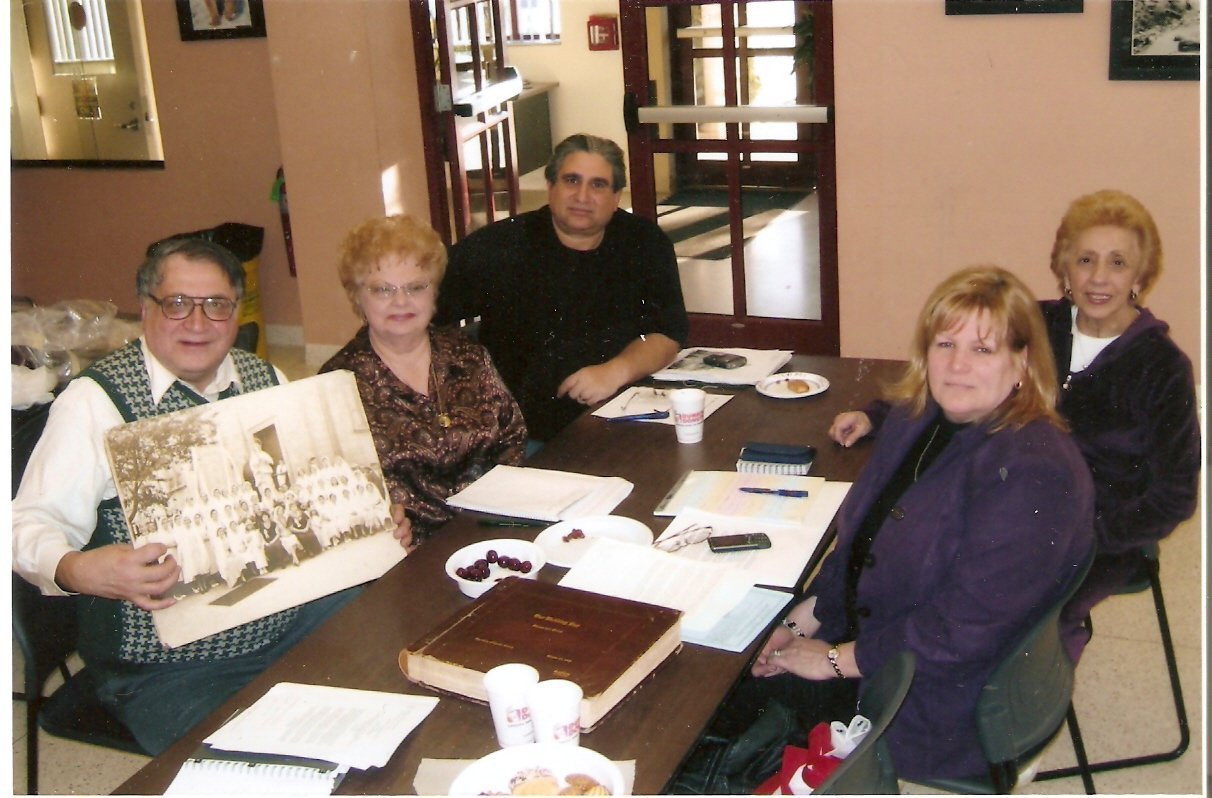

|
Fr. James Sweeney, Lucille Whitty, Barbara Florio, Mario Toglia, Mike Florio and Barbara Ann Lepak.
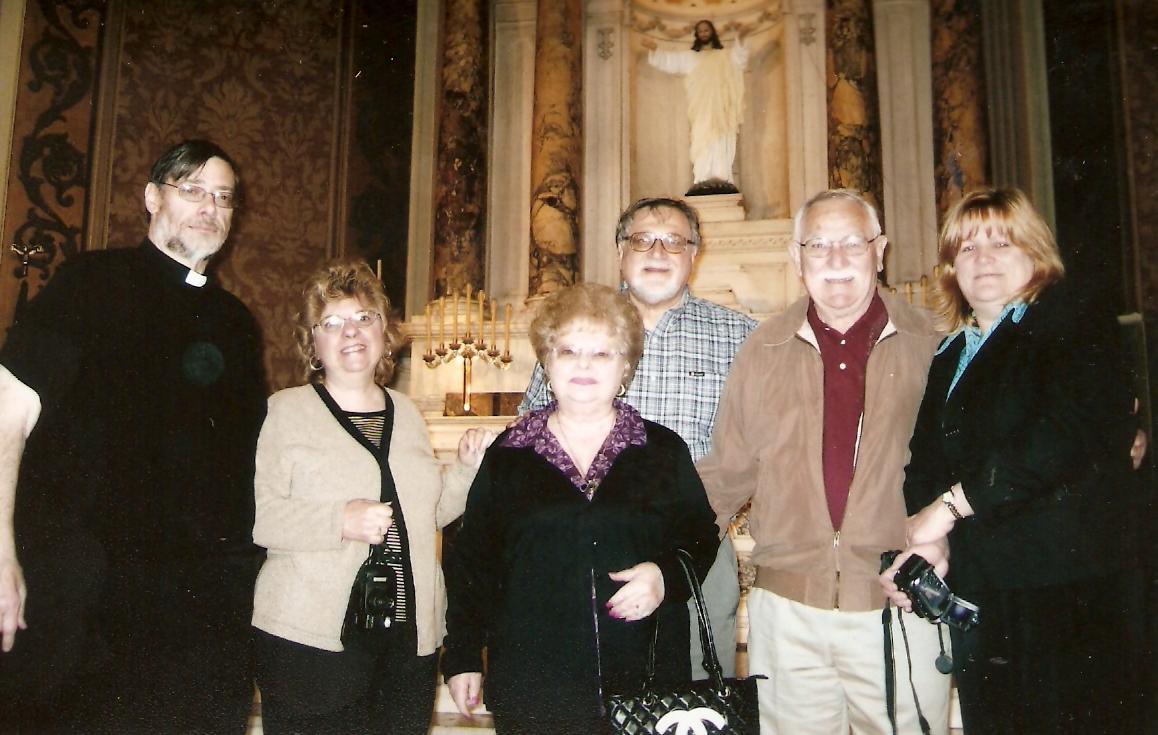
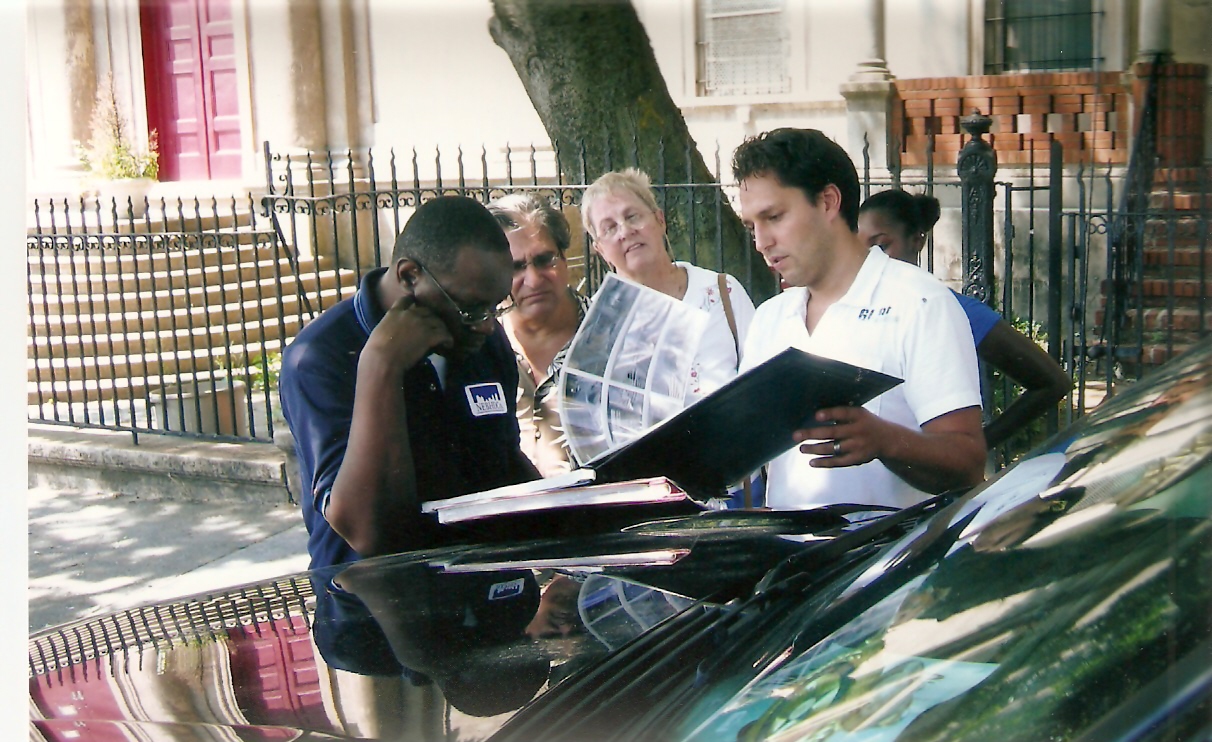 Part of the group working together with the Brooklyn Diocese on a plan seeking to save Our Lady of Loreto Church met at New York Landmarks Conservancy headquarters in Manhattan on August 5, 2009. Pictured are Marilyn Verna of the Italian Genealogical Group, Megan Rispoli, an architectural preservation consultant, , Mario Toglia, Jeff Dunston of Northeast Brooklyn Housing Development Corporation and Charles Piazza
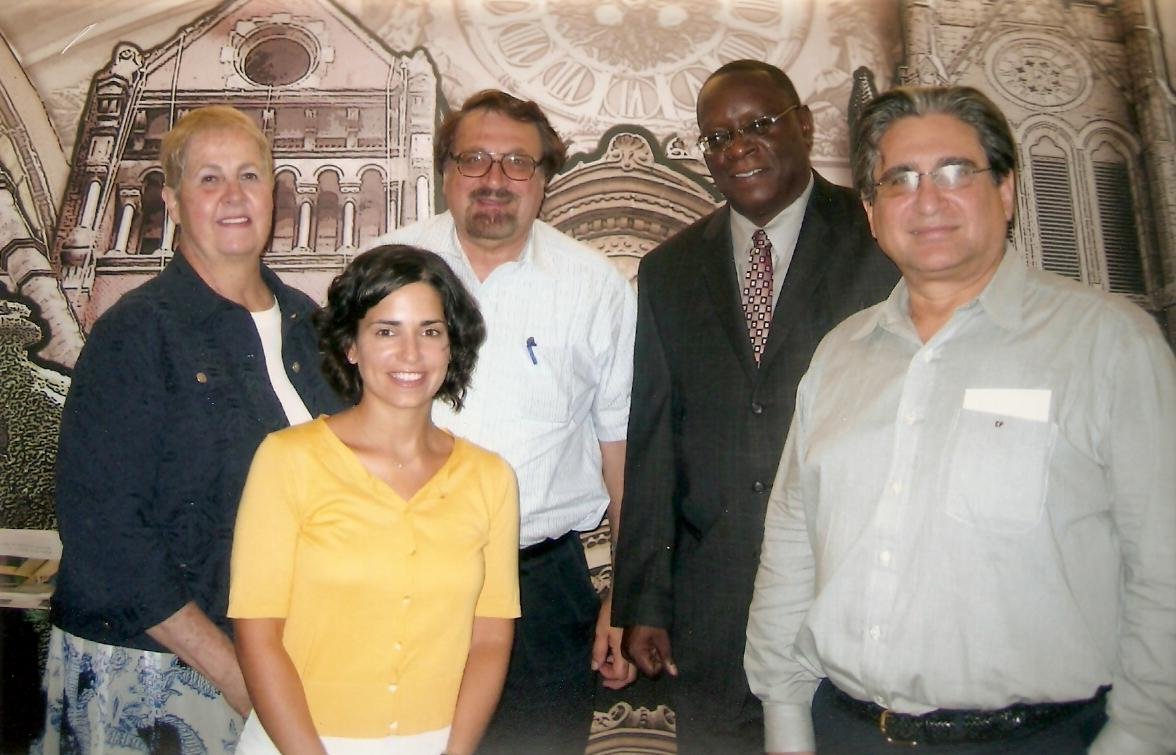 Pictured here is Donny Mondelli who started the ball rolling to save Our Lady of Loreto from being demolished with
his letter-writing campaign to stop the project. His web site caught the attention of freelance reporter Peter Duffy
who wrote the article in The New York Times. Over 250 former parishioners attended the Friends of East New York
reunion in March of 2009. Donny Mondelli, who helped organized the reunion with others, stands in front of a display
on the history of this cherished church.
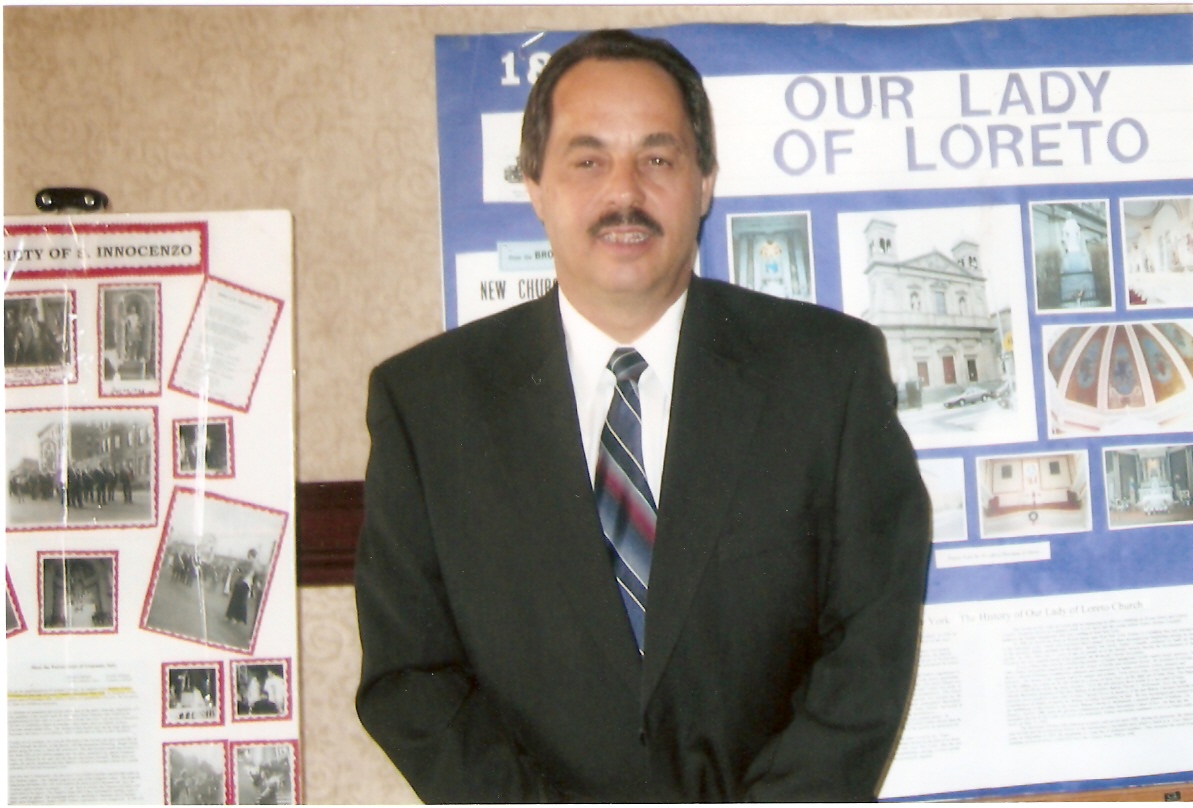 The campaign to save OLL has been in contact with Friends of St. Alphonsus in New Orleans, LA.
St. Alphonsus Church, which closed in 1979, was saved from neglect and deterioration by F.O.S.A.
and turned into an arts and cultural center. It is our hope to do the same with OLL so that it will successfully
serve the Brooklyn community in the future as well as preserve its historic Italian and Catholic cultures.
The campaign’s vision for the re-use of Our Lady of Loreto Church will be similar to the that of St. Alphonsus in
New Orleans, where concerts, lectures and exhibits are offered.
The Loreto Cultural Arts Center will serve not only the local community but also the entire area.
Anthony Corozzo of our campaign recently visited Patricia Deans, curator of the Brownsville Heritage Center,
at the Stone Avenue Library to view artwork created by her students.  Charles PIazza and Mario Toglia had the pleasure of meeting Blanche Comiskey of New Orleans during
her visit in Novewmber 2009 to her daughter's home in Cranford, NJ.
Blanche is one of the founders of Friends of St. Alphonsus and is very supportive of our campaign here to save OLL.
You can read about their group at
 Architect Michael McCaw (center) stands with fellow architect Augustin Chae and developer Jeff Dunston outside Brooklyn Diocesan Headquarters after a meeting on August 27, 2009. Mr. McCaw was brought into the campaign by Mr. Dunston to design the low income housing around the church. The new buildings will reflect and blend in with the Italianate architecture of OLL and are being discussed to be named after OLL pastors Gesualdi, Sorrentino and Barretta. Mr. Dunston has been involved with neighborhood preservation and is committed to saving Ocean Hill's history in its architecture.
Research is being done on the history of Our Lady of Loreto Church as part of the campaign to have it declared a
Brooklyn landmark. Marilyn Verna of the Italian Genealogical Group has been seeking information to this effect at
the Brooklyn Municipal Building at 210 Joralemon Avenue. Joined by Mario Toglia and Jillian Mulvihill in her research
on October 5th, Marilyn shares an interesting fact from a conveyance book listing former owners.
One such owner was Pietro Cesare Alberti of Venice known during the Dutch colonial days as Pieter Cesar Alburtus.
Alberti has been documented by the American Italian Historical Society as being the first Italian to settle in New Netherlands.
Our Lady of Loreto parish, as it turned out, sits on land owned 200 years earlier by this Venetian merchant. In the second photo, Jillian and Marilyn are looking at microfilms of various deeds pertaining to the parish.
Our campaign has drawn the attention and support of many Italian American organizations. John Pinto of the Societa Pescopaganese di East Orange, NJ views a portrait of Antonio Federici at the Passaic County Historical Society museum in Paterson, NJ.
Antonio Federici of Paterson is responsible for the remarkable reinforced concrete construction of Our Lady of Loreto Church due to his patented “recipe” for concrete block, called “cast stone.”
While cast stone trim was commonly used at the turn of the 20th century, the application of cast stone construction for a high style religious building was considered rare and innovative in that decade, a usage considered noteworthy by various building journals at the time.
 Research in libraries, archives and museums have revealed much information not only on the artistic beauty and historical importance of Our Lady of Loreto Church, but also on the professional accomplishments of those men involved in creating it.
Since November 2009, our campaign is sharing this information in Power Point presentations with the general public.  Louis Gallo, President of the P. Vincent Landi Lodge in Rocky Point, Long Island introduces Mario Toglia to the audience. Mr. Toglia made a case for landmark status for OLL in an hour long lecture from it's pre-construction years to its current status.
Looking at the Catholic Church from a historical point of view, Our Lady of Loreto represents that part of the Diocese’s past which earned it the title of “Diocese of Immigrants”. The Catholic Church in America was shaped by the early waves of Irish immigrants. The East Europeans and Italians who came in the late 19th century felt alienated in these “Irish churches” and requested neighborhood parishes of their own.
Also created alongside these ethnic territorial parishes was the establishment of the so-called National Catholic churches, which did not have borders . Only four such National Italian Catholic Churches were created in the Diocese of Brooklyn. Three have been demolished. Today, Our Lady of Loreto is the last remaining one in its original foundation. This is one of the key points mentioned by our campaign in its presentation at St. Adalbert’s Church on Staten Island. January 17, 2010: Marilyn Verna and Mario Toglia with Fr. Eugene Carrella, pastor of St. Adalbert’s. Incidentally, Father Carrella’s mother and family came from OLL Parish.  Another key point brought up about the historical significance of Our Lady of Loreto is that it is the only reminder of a once vibrant, thickly populated Italian neighborhood. Immigrants from Italy began to move into Ocean Hill in large masses in the 1880s. After many generations, their descendents moved out into the surrounding suburban areas, while recent newcomers arrived from the Caribbean and the South.
Our Lady of Loreto Church stands as a monument to Ocean Hill’s former Italian presence.
January 18, 2010: Visitors who came to listen to our presentation at the Brownsville Heritage Center in the Brownsville Public Library on Stone Avenue got to see posters about the Italian religious societies at Our Lady of Loreto. 
|